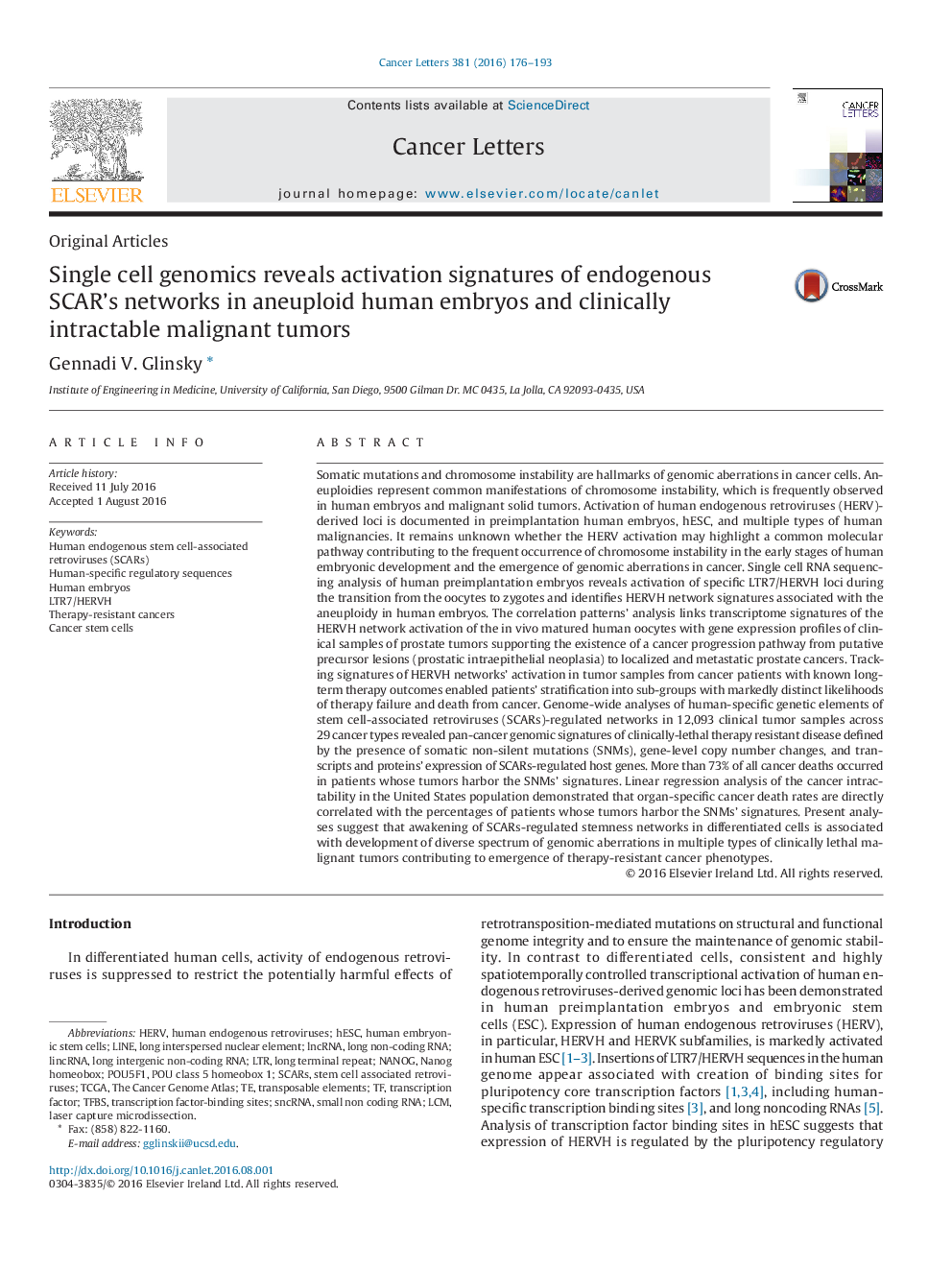| Article ID | Journal | Published Year | Pages | File Type |
|---|---|---|---|---|
| 10899280 | Cancer Letters | 2016 | 18 Pages |
Abstract
Somatic mutations and chromosome instability are hallmarks of genomic aberrations in cancer cells. Aneuploidies represent common manifestations of chromosome instability, which is frequently observed in human embryos and malignant solid tumors. Activation of human endogenous retroviruses (HERV)-derived loci is documented in preimplantation human embryos, hESC, and multiple types of human malignancies. It remains unknown whether the HERV activation may highlight a common molecular pathway contributing to the frequent occurrence of chromosome instability in the early stages of human embryonic development and the emergence of genomic aberrations in cancer. Single cell RNA sequencing analysis of human preimplantation embryos reveals activation of specific LTR7/HERVH loci during the transition from the oocytes to zygotes and identifies HERVH network signatures associated with the aneuploidy in human embryos. The correlation patterns' analysis links transcriptome signatures of the HERVH network activation of the in vivo matured human oocytes with gene expression profiles of clinical samples of prostate tumors supporting the existence of a cancer progression pathway from putative precursor lesions (prostatic intraepithelial neoplasia) to localized and metastatic prostate cancers. Tracking signatures of HERVH networks' activation in tumor samples from cancer patients with known long-term therapy outcomes enabled patients' stratification into sub-groups with markedly distinct likelihoods of therapy failure and death from cancer. Genome-wide analyses of human-specific genetic elements of stem cell-associated retroviruses (SCARs)-regulated networks in 12,093 clinical tumor samples across 29 cancer types revealed pan-cancer genomic signatures of clinically-lethal therapy resistant disease defined by the presence of somatic non-silent mutations (SNMs), gene-level copy number changes, and transcripts and proteins' expression of SCARs-regulated host genes. More than 73% of all cancer deaths occurred in patients whose tumors harbor the SNMs' signatures. Linear regression analysis of the cancer intractability in the United States population demonstrated that organ-specific cancer death rates are directly correlated with the percentages of patients whose tumors harbor the SNMs' signatures. Present analyses suggest that awakening of SCARs-regulated stemness networks in differentiated cells is associated with development of diverse spectrum of genomic aberrations in multiple types of clinically lethal malignant tumors contributing to emergence of therapy-resistant cancer phenotypes.
Keywords
Nanog homeoboxPou5f1sncRNAHERVTFBSPOU class 5 homeobox 1lincRNALTRNANOGTCGAlong intergenic non-coding RNALCMlncRNAhESClong non-coding RNASCARsThe cancer genome atlasLong terminal repeathuman embryosLINEHuman endogenous retroviruseshuman embryonic stem cellsCancer stem cellsTranscription factorTransposable elementsLong Interspersed Nuclear Elementlaser capture microdissection
Related Topics
Life Sciences
Biochemistry, Genetics and Molecular Biology
Cancer Research
Authors
Gennadi V. Glinsky,
